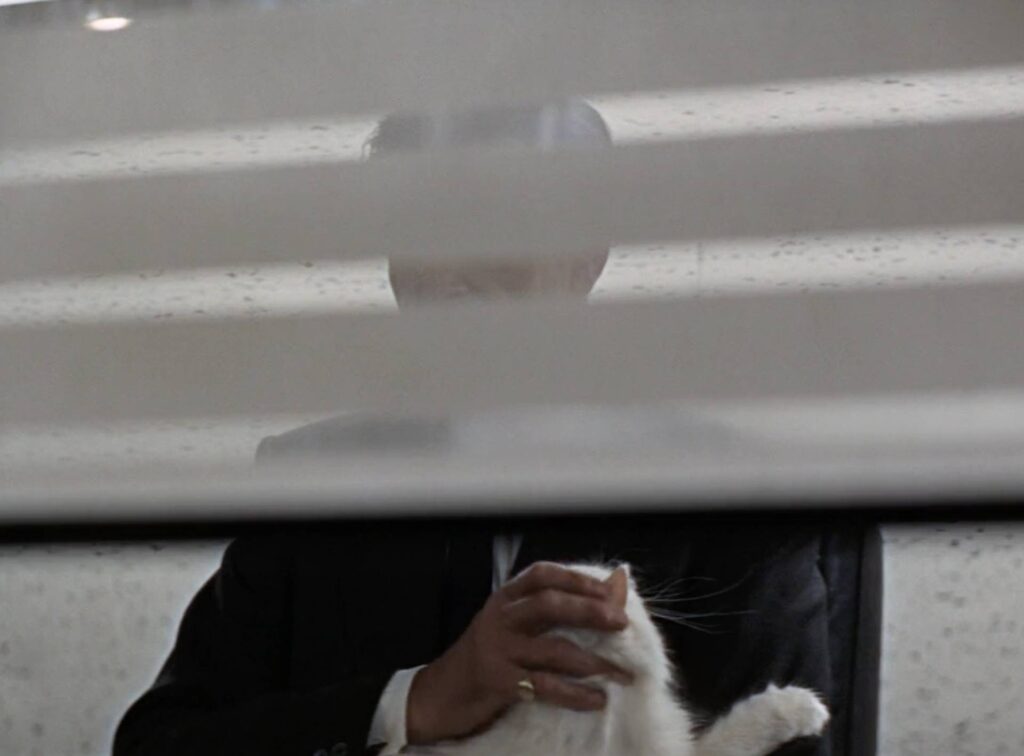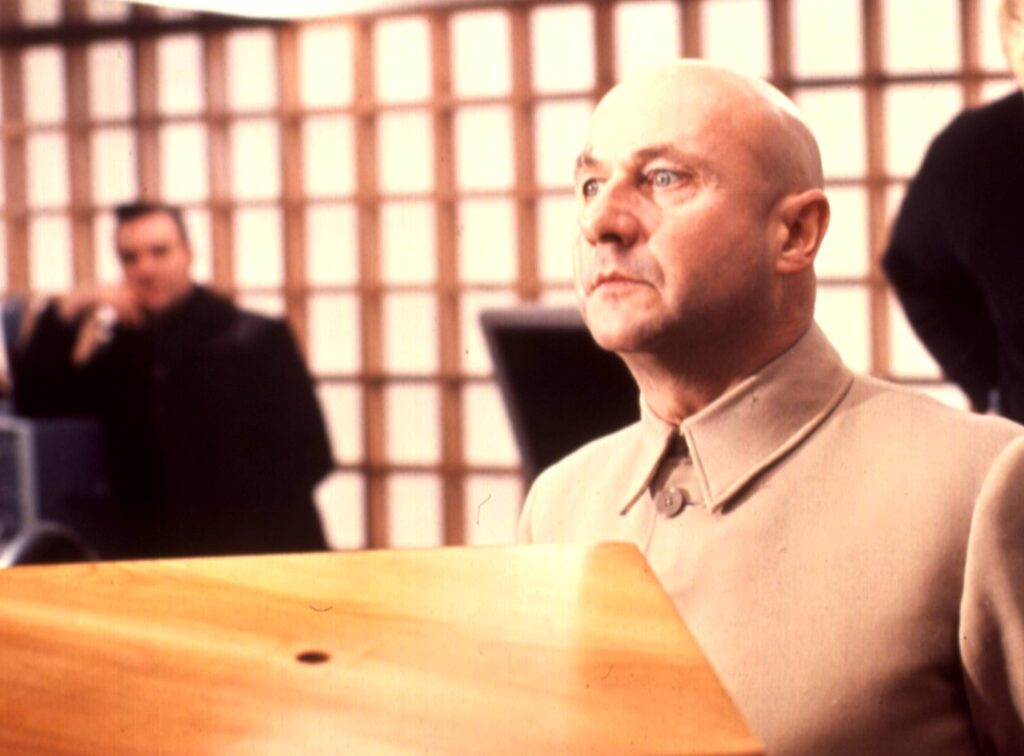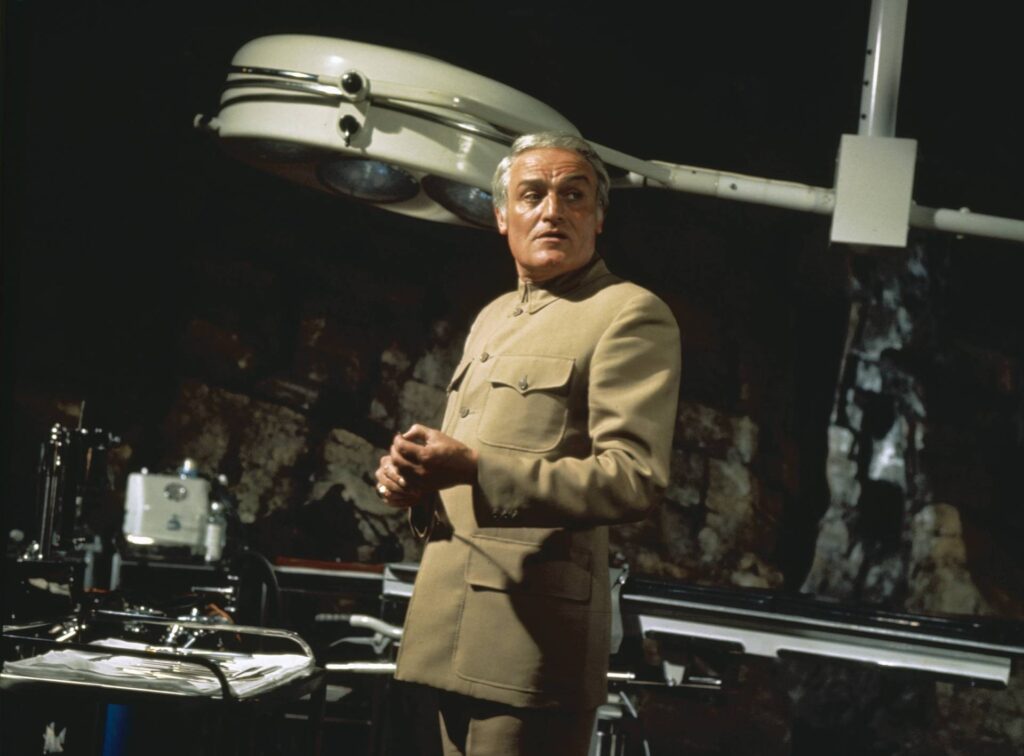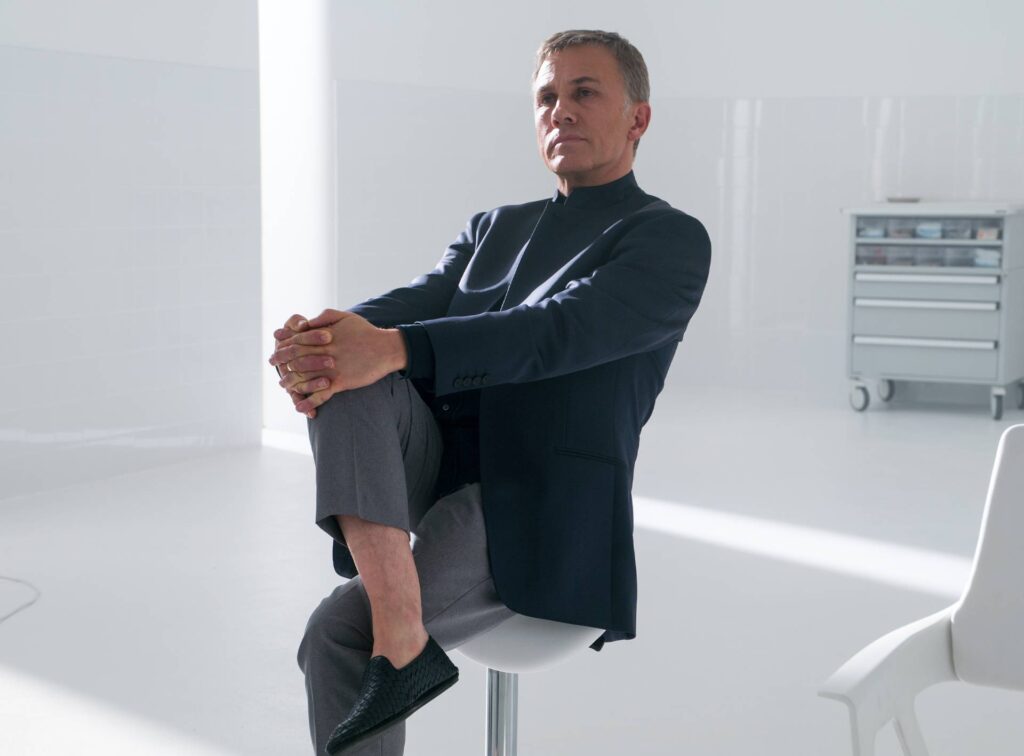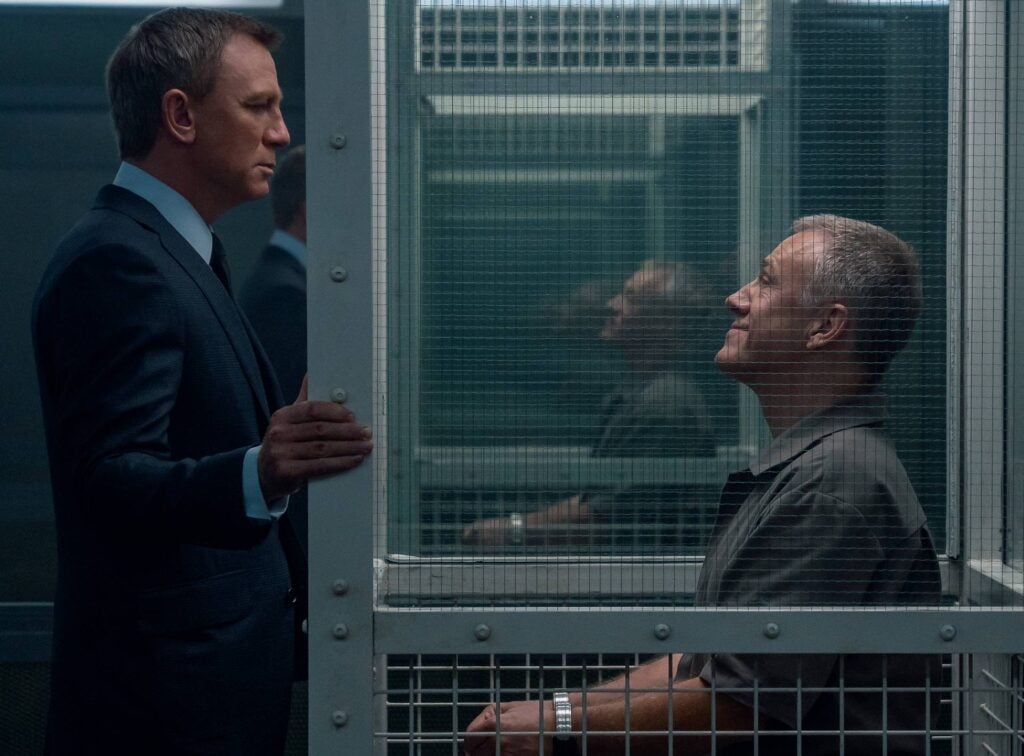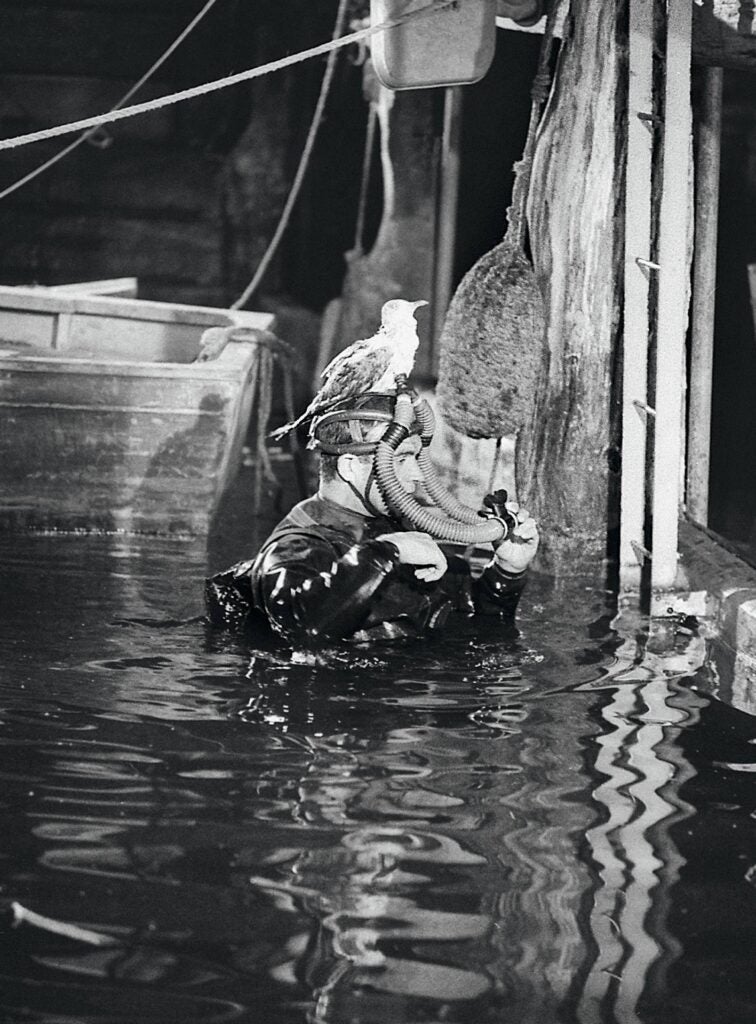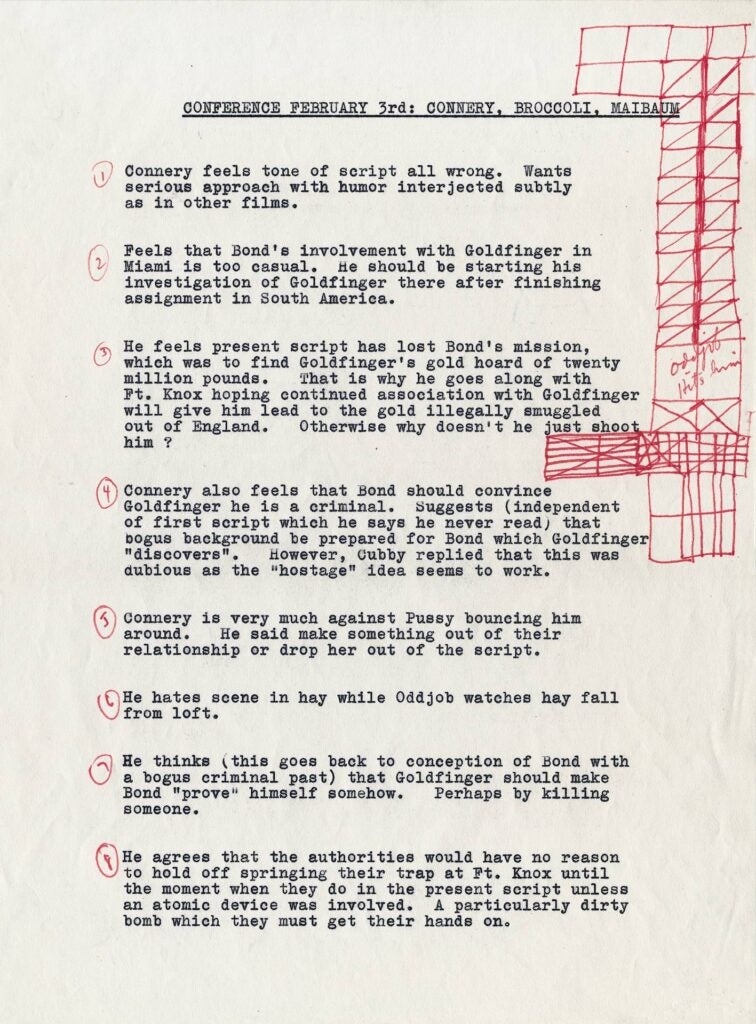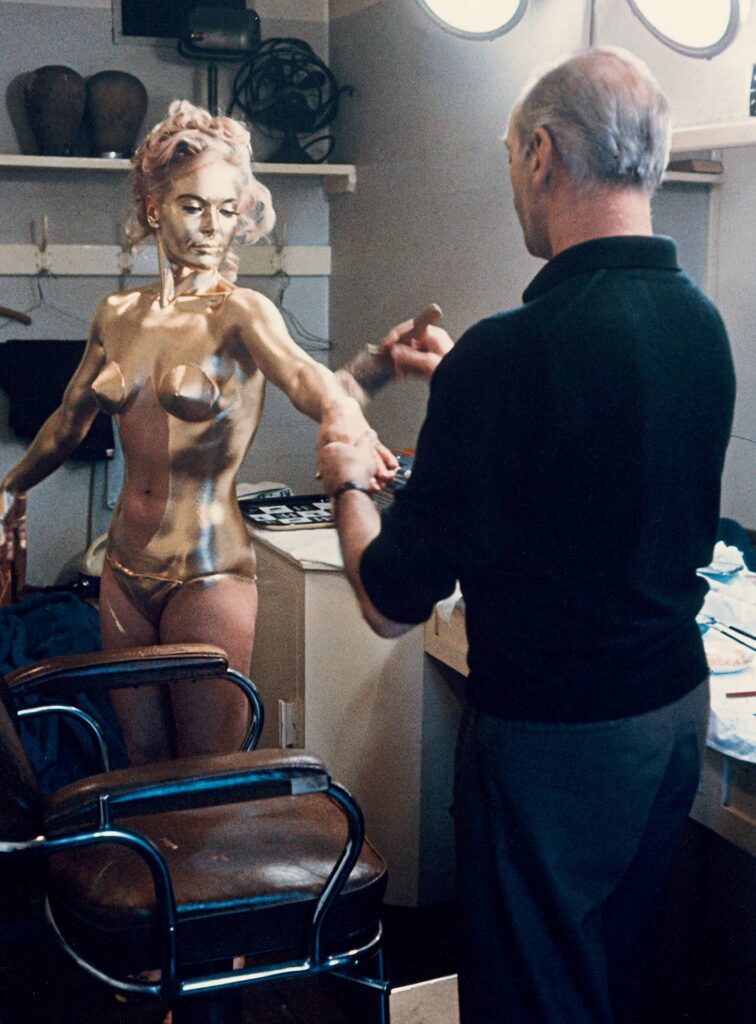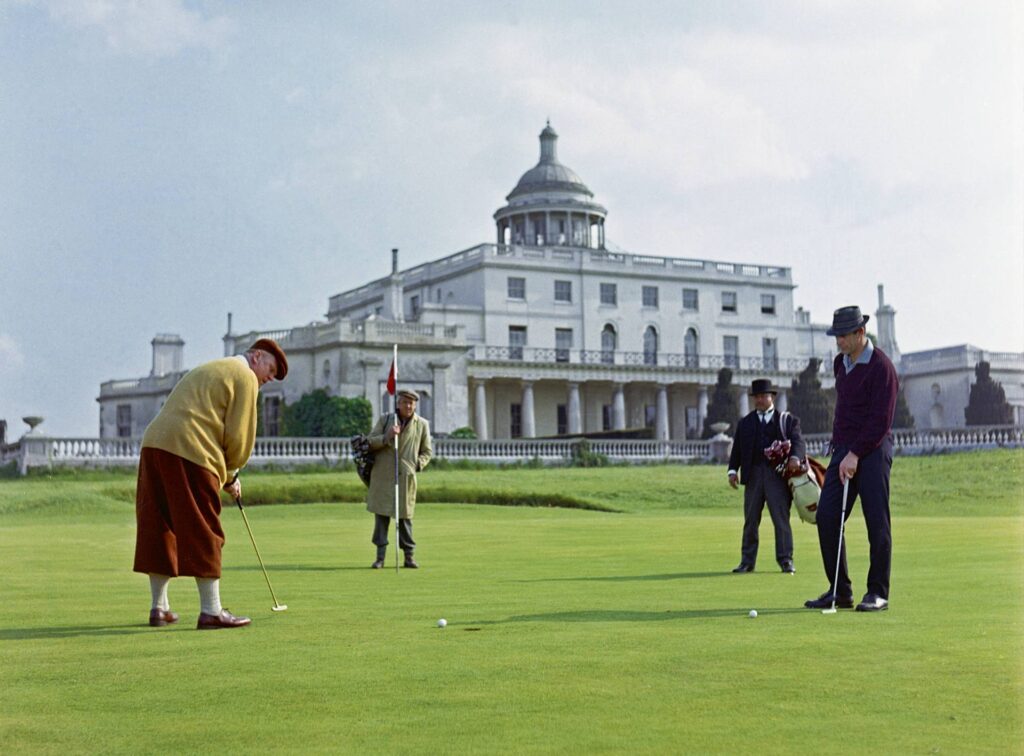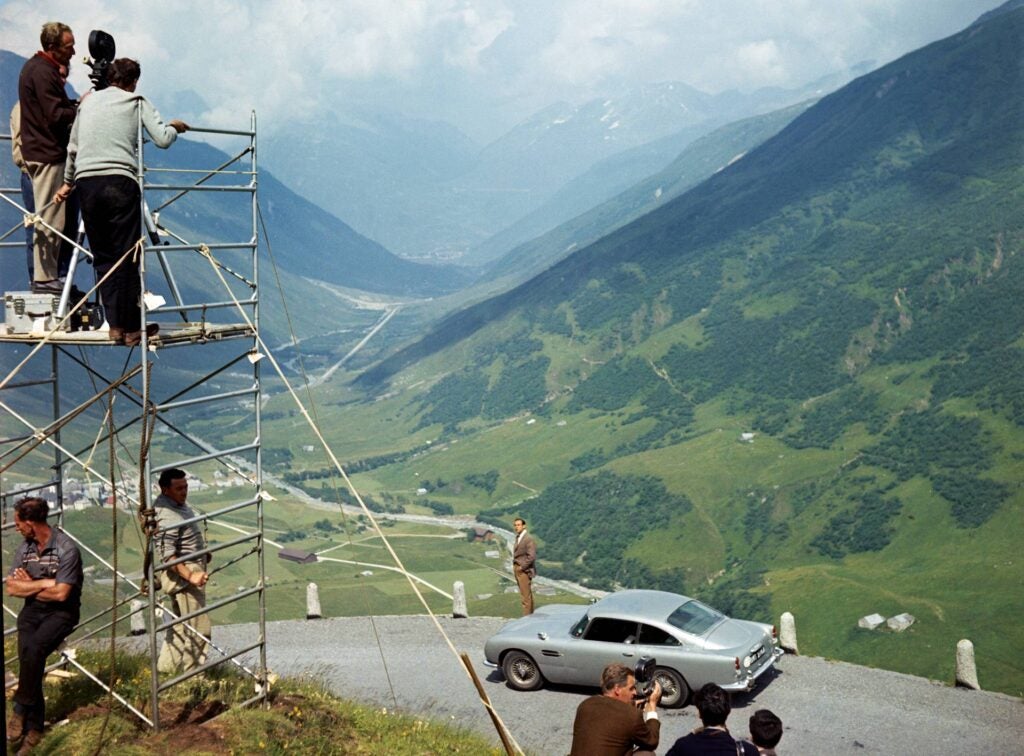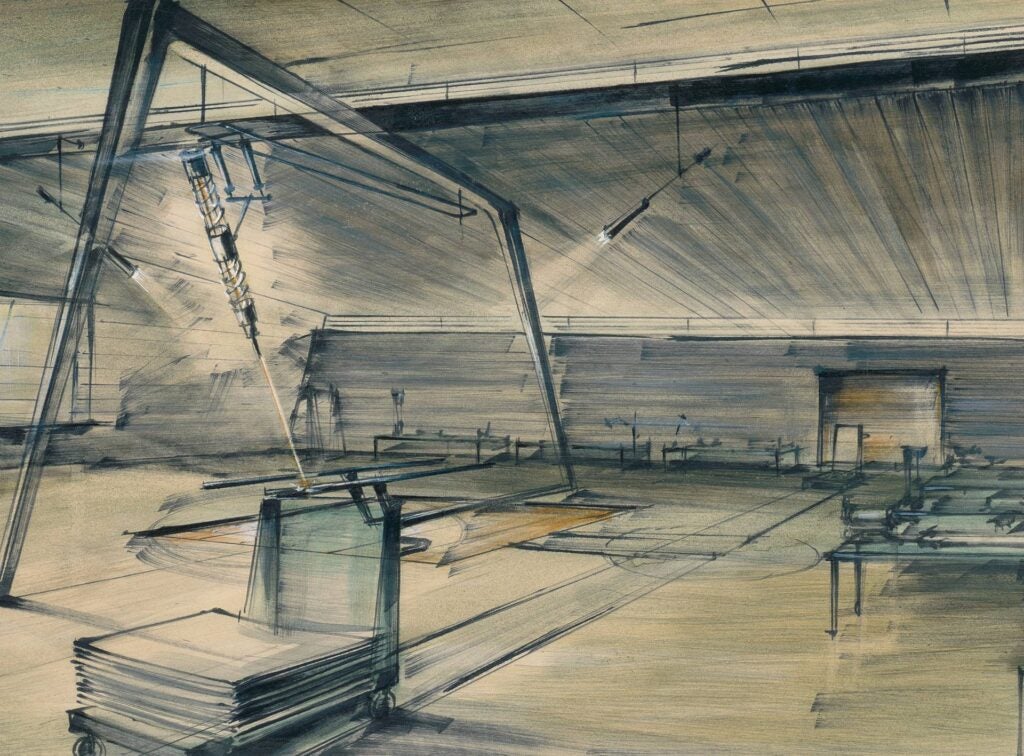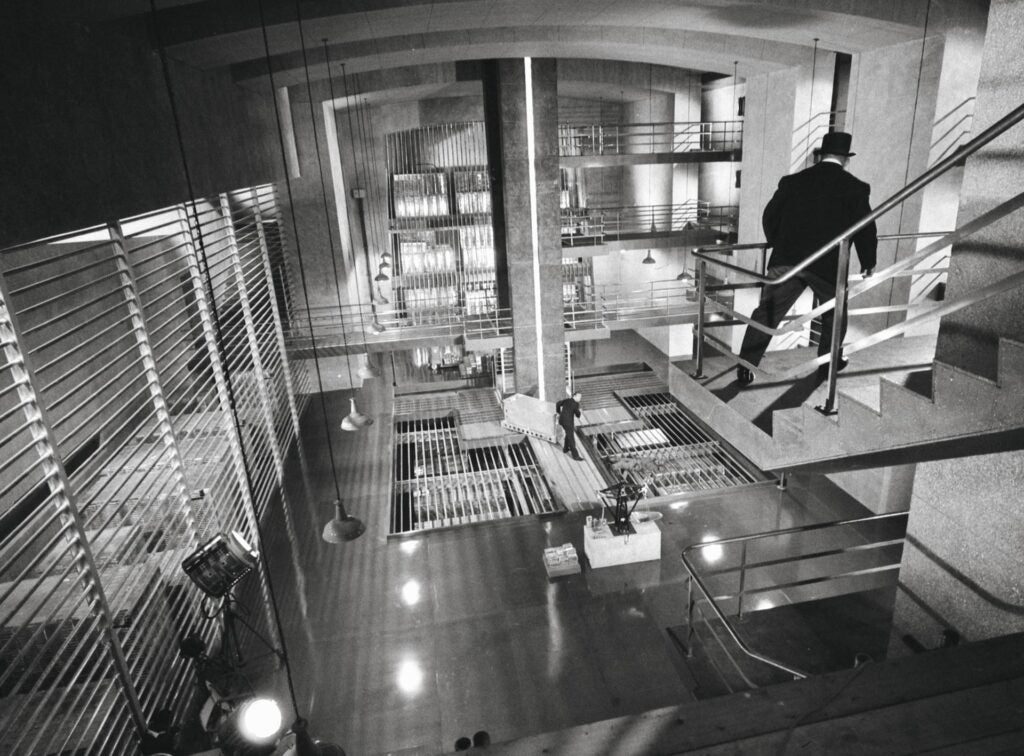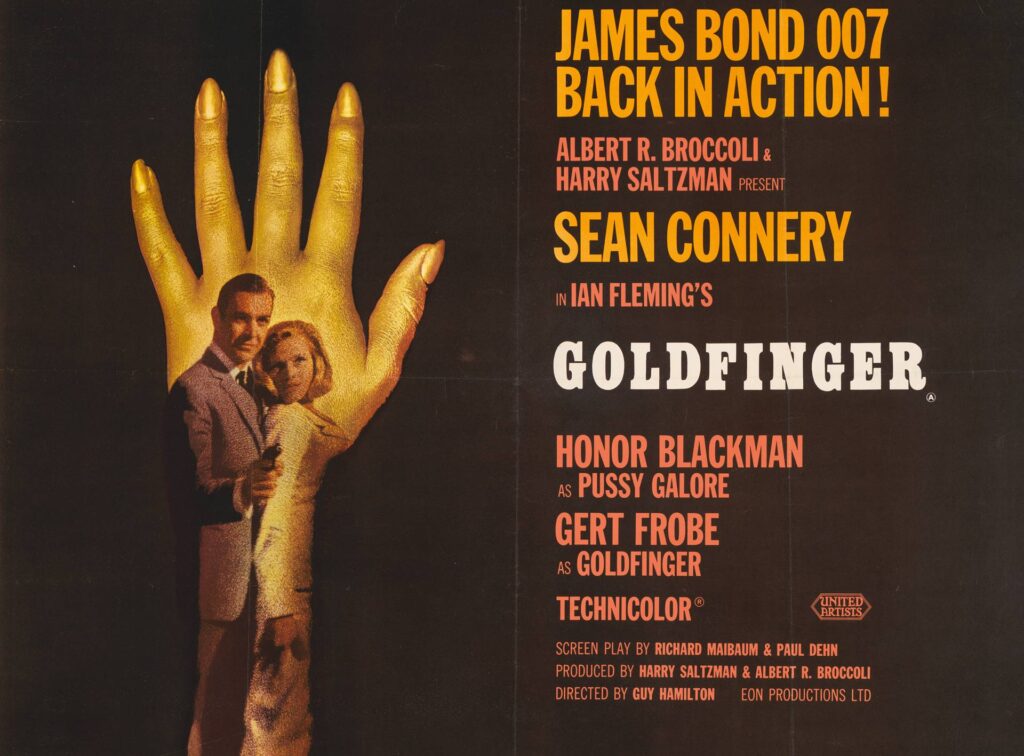Over the course of twenty-five films, James Bond has been behind the wheel of some of the fastest and stylish cars in the history of big screen driving. From small accouterments — the ability to drop tacks to slow a pursuer down — or huge transformations — turning a road vehicle into a submarine — the Q’s car gadgets of 007 have saved Bond in a crisis on numerous occasions, becoming a constant source of delight for audiences since 1964’s Goldfinger.
Aston Martin DB5 in Goldfinger (1964)
Expected to be reunited with his trusted Bentley, Bond (Sean Connery) is surprised to be gifted an Aston Martin DB5 by Q (Desmond Llewelyn) boasting a plethora of hidden extras. The idea of an Aston Martin full of gizmos appeared in Ian Fleming’s novel but was souped up by production designer Ken Adam. “I had a Jaguar which was continuously being damaged by people parking badly,” he recalled. “Having guns at the back of the Aston Martin and the overriders becoming like boxing gloves and so on became part of me releasing my frustrations.”
Q Fact: Front mounted machine guns hidden behind the indicator lights; revolving licence plates valid for England, France and Switzerland (this idea came from director Guy Hamilton who fantasised about escaping parking tickets); a high-powered oil jet; rear smoke screen; revolving tyre slasher; onboard radar display; a weapons panel in the centre armrest; and, most famously of all, an ejector seat operated by a button hidden in the knob of the gear stick – in Skyfall, Bond threatens to use it on M (Judi Dench).
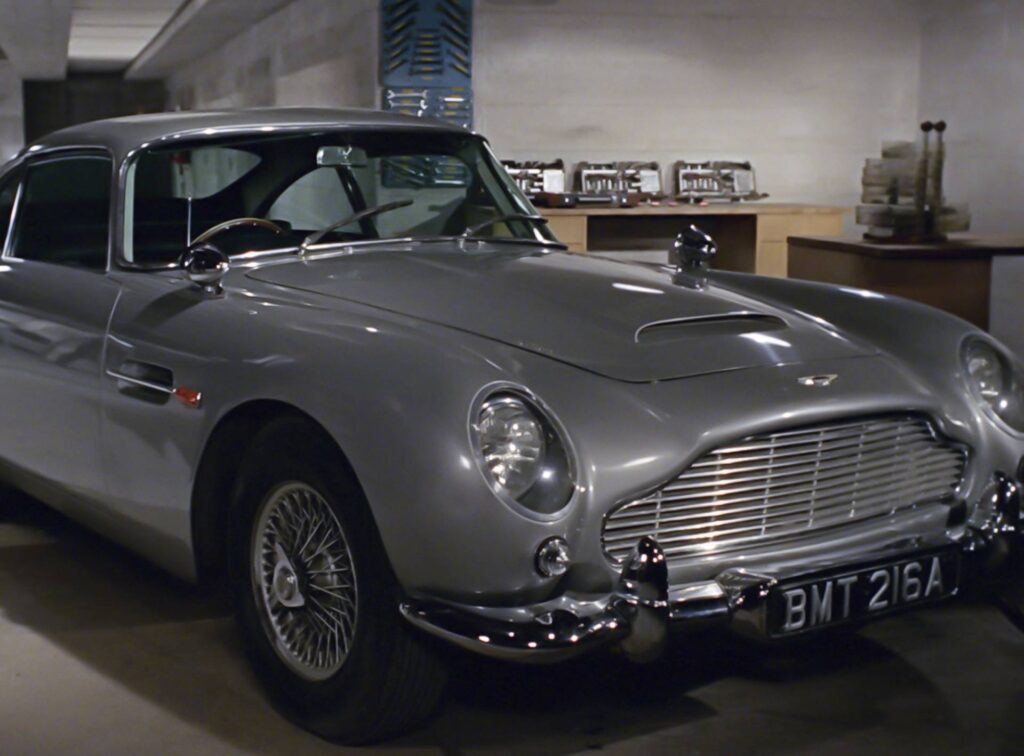
Aston Martin DB5 in Thunderball (1965)
A star after Goldfinger, the Aston Martin DB5 returned for Bond’s fourth outing. The car plays a pivotal role in an escape from Jacques Boitier’s chateau and a high velocity chase with Fiona Volpe (Luciana Paluzzi).
Q Fact: The hero gadget on display is a water cannon concealed in the rear of the car that keeps the pursuing henchmen at bay.
Aston Martin DBS in On Her Majesty’s Secret Service (1969)
A new Bond (George Lazenby) gets a new car that plays a prominent part in the beginning of the film (Bond rescuing Tracy) and its tragic finale. The car is seen being repaired in Q’s workshop in Diamonds Are Forever.
Q Fact: A telescopic rifle built into the glove department.
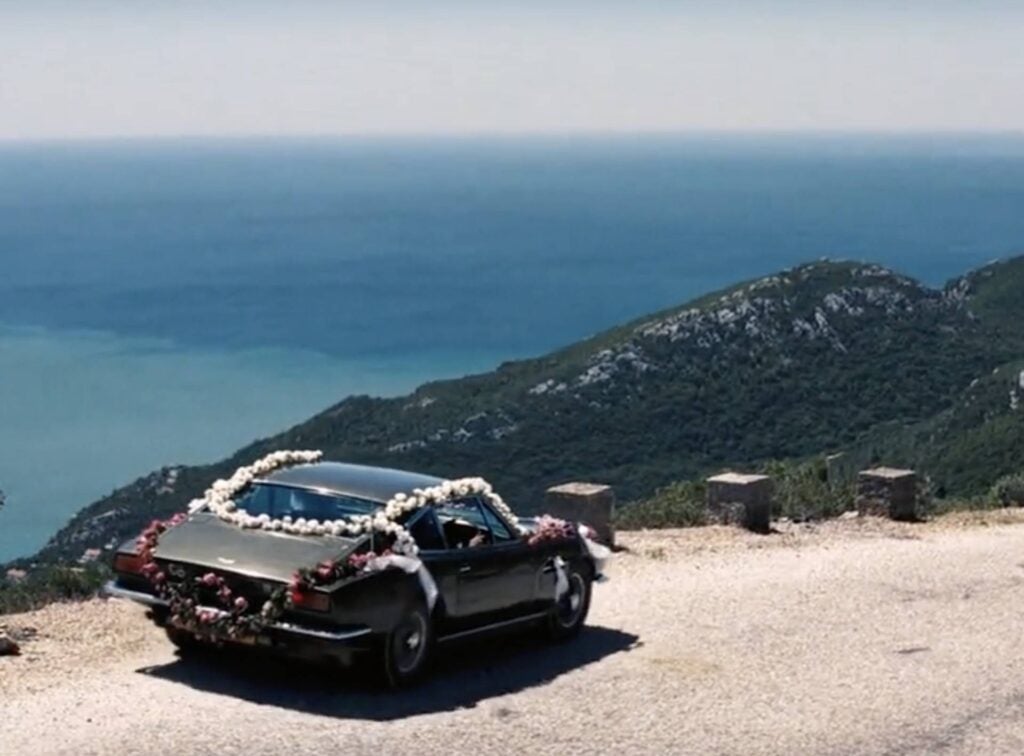
Lotus Esprit in The Spy Who Loved Me (1977)
Known as ‘Wet Nellie’, an underwater counterpart to Q’s gyrocopter ‘Little Nellie’, the Lotus Esprit spirits Bond (Roger Moore) and Anya Amasova (Barbara Bach) away from Stromberg’s henchman, turning into a speedy submarine at the flick of a switch. “The Lotus Esprit lent itself beautifully with that very streamlined body to work as a submarine,” says production designer Ken Adam. Although the car jumped off a jetty in Sardinia, the underwater Lotus was shot in the clearer waters of the Bahamas. “It was quite amusing because a couple of times we were filming underwater, we nearly got run over by the motorised Lotus,” recalled special effects designer Derek Meddings.
Q Fact: On the road, the car unleashes cannons from behind the number plate that spray cement on the windscreens of chasing vehicles. Beneath the sea, the wheel arches transform into fins and propellers extend from the back. Bond navigates via a small periscope and uses front mounted rockets, limpet mines and radar guided surface to air missiles to see off assailants. None of this surprises Russian spy Anya — she had previously stolen blueprints for the car.
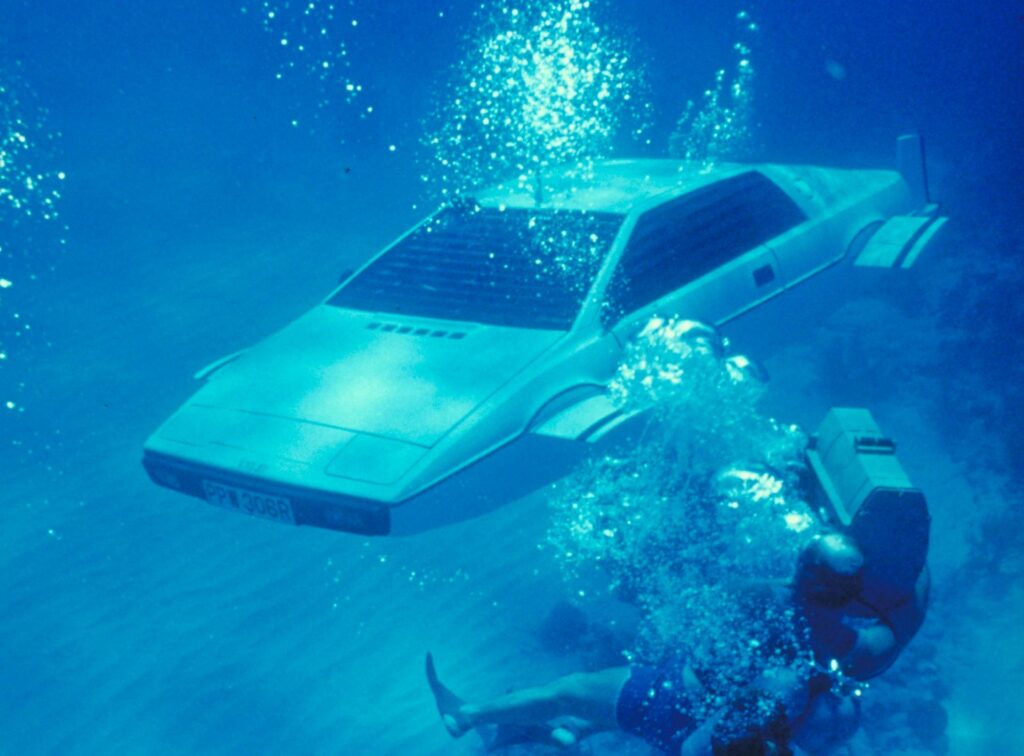
Lotus Esprit Turbo in For Your Eyes Only (1981)
After a break in Moonraker, the Lotus Esprit returned in Roger Moore’s third outing. A film that dialed back on the hardware, the Lotus still had an explosive gizmo in its arsenal.
Q Fact: As Cuban hitman Gonzales’ goons attempt to break into the stationary Lotus, smashing the window activates an explosive device that blows the thugs into oblivion. Perhaps they should have paid attention to the ‘Burglar Protected’ sticker.
Aston Martin V8 in The Living Daylights (1987)
“We had changed Bond’s car over the years but we thought that as we were introducing a new Bond, we’d bring back the classic Aston Martin, a real bonus for many Bond fans,” said co-writer and producer Michael. G. Wilson. Picking up with musician Kara Milovy (Maryam d’Abo), 007 (Timothy Dalton) employs the car’s breadth of gadgetry to evade the KGB and Czech police, before sliding into Austria on a cello case.
Q Fact: Laser beam tyre slashers (an upgrade on Goldfinger) that remove a police car from its axle; retractable skis and spiked tyres; a police band radio; bullet proof windows; rockets behind the fog lights (the missile display is on the front windscreen); and a rocket booster that allows Bond to jump over a blockade. Like the For Your Eyes Only’s Lotus, the V8 also has the capacity to self-destruct to avoid falling into enemy hands.
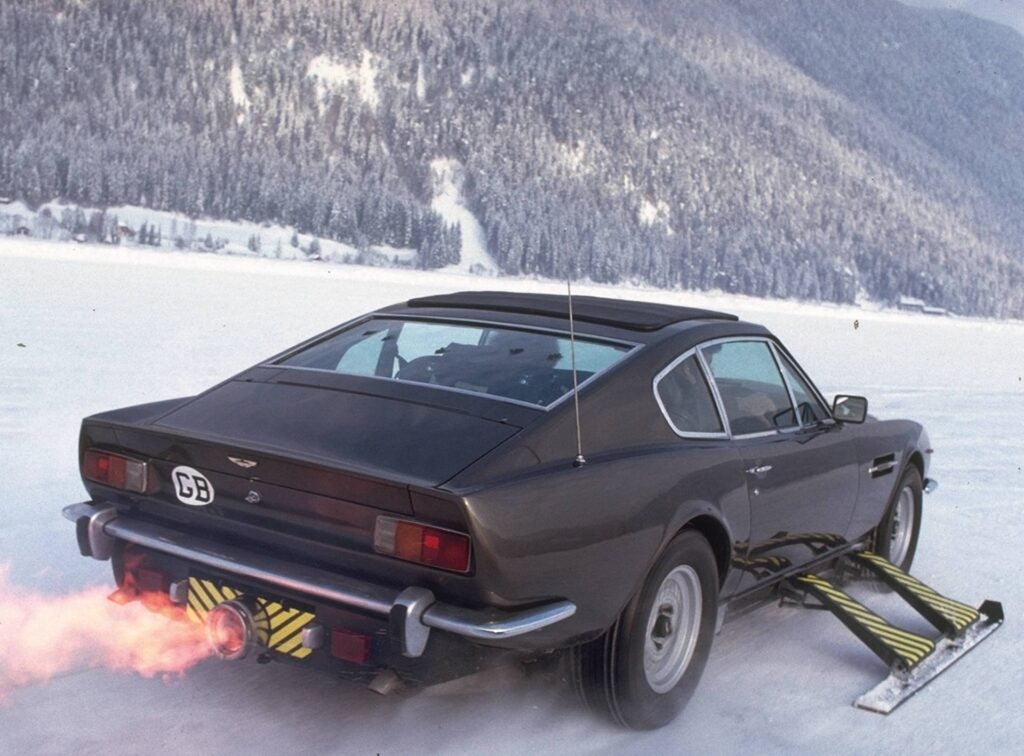
Aston Martin DB5 in GoldenEye (1995)
The DB5 made a triumphant return, with Bond playing a thrilling cat and mouse chase with Xenia Onatopp (Famke Janssen), then pulling up in true 007 style outside a Monte Carlo casino.
Q Fact: Q’s gadgetry here is perhaps best described as practical. A fax machine in the dashboard and a cellular voice communication system. There is also a refrigerated compartment for a chilled bottle of Bollinger.
BMW 750IL in Tomorrow Never Dies (1997)
The BMW 750IL might be the most gadget laden car in the series’ history, coming into its own when Bond has to escape from a German car park in the Atlantic hotel.
Q Fact: Rockets that come out of the sun roof; tyres that re-inflate themselves; a chain cutter that emerges from the bonnet; bullet-proof glass and bodywork; an electronic defence system that emits a 20,000 volt shock; magnetic flash grenades; a tear gas mechanism; a metal spike dispenser; and a safe concealed in the glove compartment.
But the most impressive state of art technology is the ability to drive the BMW with a remote control from an Ericsson cell phone, allowing Bond to steer it from the comfort and safety of the back seat. “We had 17 BMW 750ILs in aspic silver”, said special effects technician Chris Corbould. “Four were adapted to what is called ‘Hidden Driver Car’ to give the effect that Bond is using the remote control.”
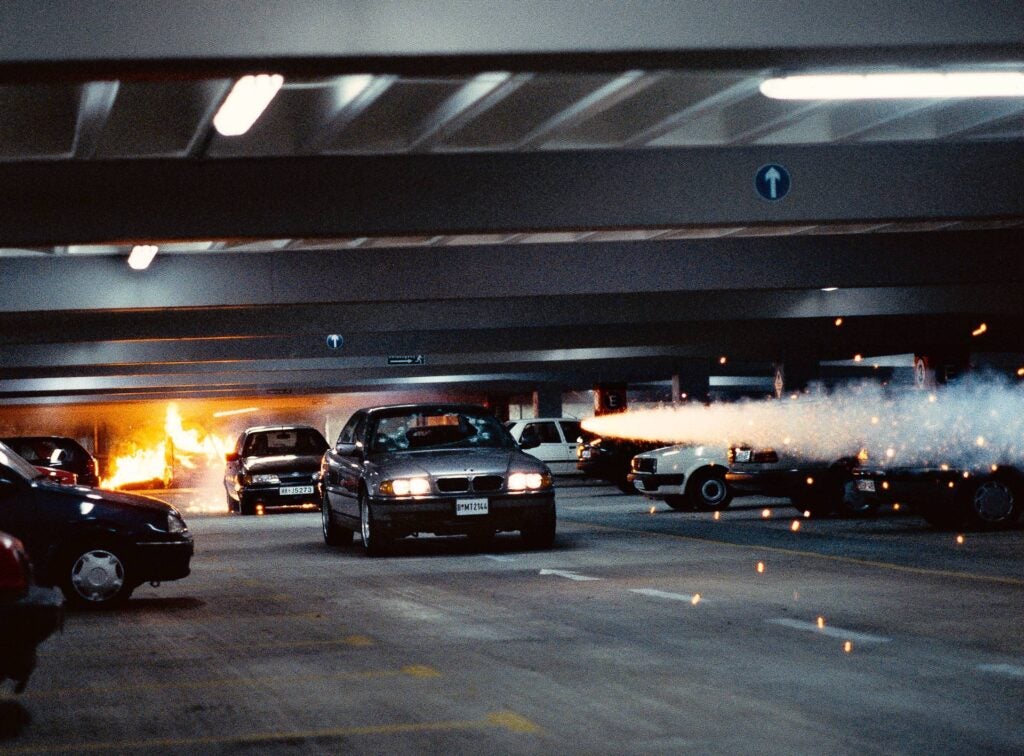
BMW Z8 in The World Is Not Enough (1999)
Given an introduction to the car by Q’s assistant (John Cleese), the Z8 transports Bond from the oil pipeline in Azerbaijan to a caviar factory on the Caspian Sea where it meets a sticky demise.
Q Fact: A remote control keychain allowing 007 the ability to start the engine from a distance and two masked ground-to-air missiles. Unfortunately, there is nothing in the arsenal to stop it being cut in half by a rotating blade dangling from a helicopter.
Aston Martin V12 Vanquish in Die Another Day (2002)
Playfully nicknamed the Vanish by Q because of its adaptive camouflage mode that made it practically invisible.
“When we suggested it originally, we weren’t sure anyone would go for it,” said screenwriter Robert Wade. “The idea is that in Iceland or in the desert, when there’s not much contrast in the background, it’s invisible but in an urban environment, you’d be able to see it.” Co-writer Neal Purvis added, “Q says, ‘It’s as good as invisible’. It’s a camouflage, not a cloaking device.”
Q Fact: Beyond invisibility, the car also featured thermal imaging (dispensed from the CD player); target seeking shotguns; machine guns; and torpedoes that come in handy when Bond is chased across a frozen lake in Iceland by General Zao (Rick Yune). Bond also niftily deploys the ejector seat to flip the car the right way up when it is skidding along on its roof. Spiked wheels also allow 007 to stick to a cavern wall to avoid Zao’s charging Jaguar.
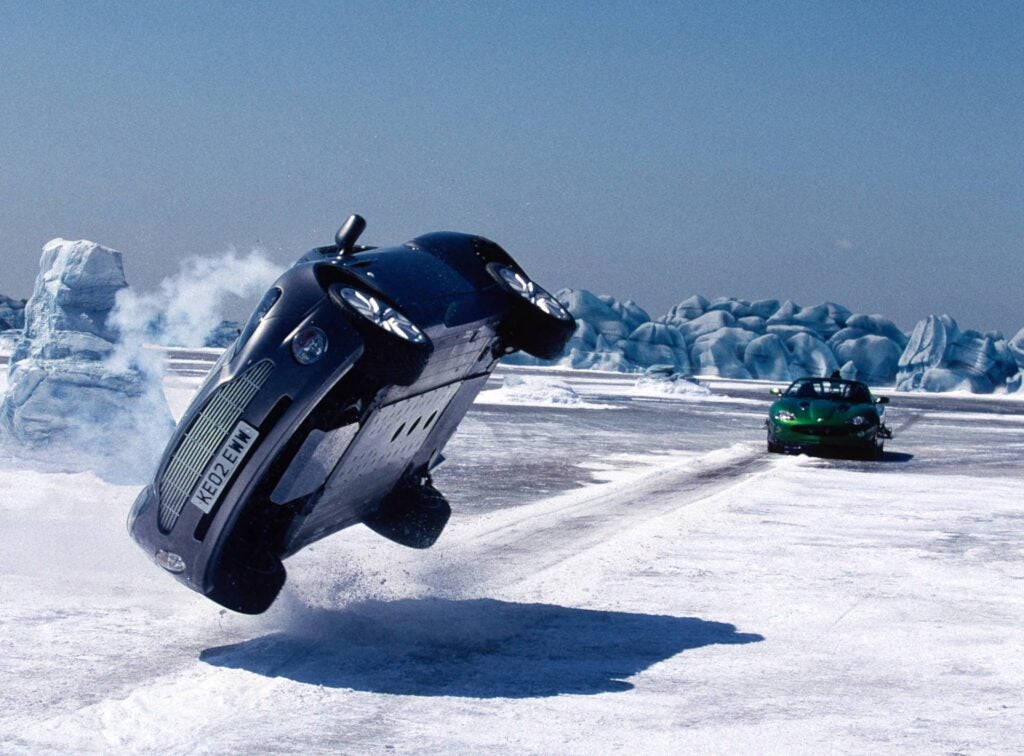
Aston Martin DB5 in Casino Royale (2006)
M sends alias passports, a weapon and Q’s newest Aston Martin DB5 to Bond in Montenegro. The car comes to a spectacular demise in pursuit of Le Chiffre, flipping seven times after swerving. The stunt achieved a Guinness World Record for the most cannon rolls in a car, performed by stuntman Adam Kirley at Millbrook Proving Ground, Milton Keynes.
Q Fact: A secret compartment housing Bond’s Walther PPK plus a small defibrillator and medical kit that, in a tense few moments, saves 007’s life after being drugged in Casino Royale.
Aston Martin DB10 in Spectre (2015)
Specifically developed by Aston Martin who created ten cars for the film, the DB10 was reassigned from 007 to 009 due to Bond’s unsanctioned mission in Mexico. Bond steals the car and heads to Rome on the trail of The Pale King and is pursued in a high-speed chase by Hinx (Dave Bautista) in a Jaguar C-X75. But, new to the car, Bond has to escape Hinx while negotiating an unknown set of gadgets.
Q Fact: Rear machine guns operated by the BACKFIRE button and a rear windscreen targeting device — only to discover the car has no ammunition. The EXHAUST button unleashes rear flamethrowers that slow down Hinx’s progress while an AIR button initiates a combined ejector seat and parachute that lifts Bond to safety as the car soars into the river. But perhaps most surprising is the ATMOSPHERE switch which plays a pre-loaded playlist for 009 so in the heat of the chase, Bond is faced with the opening strains of Frank Sinatra’s New York, New York.

Aston Martin DB5 (2021) in No Time To Die
For Daniel Craig’s final outing, Bond was reunited with the classic Aston Martin DB5, speeding with Madeleine Swann (Léa Seydoux) through the hilltop town of Matera, before being cornered in an ancient town square.
Q Fact: The DB5’s gadgetry has come a long way since Bond’s first Aston Martin in 1964. Among the updates are LED screen revolving number plates; mini mines that scatter from the boot; and thousand-round-a-minute guns behind the headlights. “I was very keen to have a big end moment,” says production special effects supervisor Chris Corbould. “So we came up with the idea of donutting around, spraying bullets 360 degrees, shredding walls and buildings. Bond hits the smokescreen and it completely fills the square in seconds, which gives him the opportunity to get away.”
007 Science: Inventing the World of James Bond at Chicago’s Griffin Museum of Science and Industry is open until 27 October 2024.
Bond In Motion at the International Spy Museum is open until April 2025.
007 Action launches in Vienna on September 7th 2024 at METAstadt Convention Centre.
